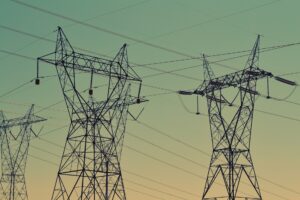Alberta 
Coal power disappearing from Alberta’s grid as final generators prepare to transition
 Alberta’s electricity grid is expected to fully wean off coal this summer, six years ahead of schedule — a remarkable climbdown from the energy source that 10 years ago provided Albertans with more than half their electricity. Alberta’s first coal-free hour came on Feb. 2 and lasted 11 hours. It happened again in early March, with the province’s final two coal plants producing zero energy for nearly 48 hours between March 4 and 6, according to the Alberta Electricity System Operator’s (AESO) metered volume data. The final step will come this summer when Capital Power’s Genesee 1 and 2 plants finish transitioning two coal-fired plants to natural gas. Alberta had 18 coal-fired plants in 2016. At the time, Alberta produced more coal pollution than all other Canadian provinces combined.
Alberta’s electricity grid is expected to fully wean off coal this summer, six years ahead of schedule — a remarkable climbdown from the energy source that 10 years ago provided Albertans with more than half their electricity. Alberta’s first coal-free hour came on Feb. 2 and lasted 11 hours. It happened again in early March, with the province’s final two coal plants producing zero energy for nearly 48 hours between March 4 and 6, according to the Alberta Electricity System Operator’s (AESO) metered volume data. The final step will come this summer when Capital Power’s Genesee 1 and 2 plants finish transitioning two coal-fired plants to natural gas. Alberta had 18 coal-fired plants in 2016. At the time, Alberta produced more coal pollution than all other Canadian provinces combined.
“I think it’s arguably the largest emissions-reduction policy in Canadian history,” said Andrew Leach, economist at the University of Alberta. Leach chaired Notley’s climate leadership panel when the NDP was in government from 2015 to 2019 and led the design of Alberta’s coal phaseout plan. The transition comes with major emissions-reduction gains: Getting off coal will reduce Alberta’s electricity emissions from about 50 megatonnes (MT) in 2005 to 16.5 MT projected for this year, according to AESO. For context, Canada’s entire electricity grid produced 52 MT of emissions in 2021, according to the federal Ministry of Environment and Climate Change.
Source: Calgary Herald
Electricity Prices for Alberta
The Alberta power pool price averaged 6.309 cents per kWh in March 2024. This price is 1.766 cents lower than last month’s average of 8.075 cents. The pool price has averaged 12.292 cents per kWh over the last 12 months.
As of April 1, 2024, the forward market was predicting electricity prices for the calendar years of 2024, 2025, 2026, 2027, 2028, and 2029. These prices are 6.585, 5.651, 5.576, 6.000, 6.050, and 6.050 cents per kWh respectively.
Gas Prices for Alberta
Direct Energy’s gas rate for March 2024 was $2.133 per GJ in Alberta. The April 2024 rate has been set at $1.933 per GJ. Alberta gas prices have averaged $2.681 per GJ over the last 12 months.
As of April 1, 2024, the forward market was predicting gas prices for the calendar years of 2024, 2025, 2026, and 2027. These prices are 1.95, 3.14, 3.55, 3.57, and 3.50 cents per GJ, respectively.
British Columbia 
Provincial approval of new jetty for LNG exports a ‘slap in the face,’ says environmental group
Environmental groups say the province’s approval of a new jetty in Delta, B.C., to facilitate exporting liquefied natural gas is inconsistent with its climate goals. The FortisBC Tilbury LNG project consists of building a jetty on the south arm of the Fraser River adjacent to the company’s existing Tilbury LNG facility. It will be used to fill ships exporting LNG, as well as to provide fuel for bunkering ships that then refuel ships in other locations that run on LNG. Peter McCartney, a climate campaigner for the Wilderness Committee, said the approval is a “slap in the face” to all those who have opposed the project over the past decade, and that it undermines the province’s own climate commitments.” In an interview with CBC News after the province announced the approval, McCartney expressed concern over the increase of traffic and noise in the Fraser River when ships come and go. This, he said, will disturb crucial salmon habitat, and by extension put pressure on the endangered southern resident orca population that depend on those fish.
In a press release, FortisBC said that it had consulted broadly across the region, and that those consultations led them to make changes to the project that would “reduce the potential impact on vegetation, fish, and fish habitat.” Tom Green of the David Suzuki Foundation said it’s bad business to build new infrastructure for fossil fuels, and companies should be focusing on wind and solar energy — both of which he says are eating into the demand of fossil fuels. The 22 environmental conditions include a plan to reduce greenhouse gas emission, Indigenous involvement in project monitoring, and measures to reduce harmful effects on water and air quality. McCartney said he’s concerned about the power the fossil fuel industry has over the current provincial government, noting that FortisBC lobbyists met with provincial representatives 19 times in the January and February of this year alone.
Source: CBC
Ontario 
Toronto wants buildings to tap into its sewage for heating
 Many buildings buy and burn gas or other fossil fuels to keep warm. But there’s actually a free, carbon-free source of heat underfoot that they could be tapping into instead — sewage pipes. Heat from wastewater has been providing space heating and hot water to buildings in Vancouver’s Southeast False Creek neighbourhood since 2010. The project is now connected to 4,920 residential suites in 34 buildings, with plans to expand into other neighbourhoods. Such projects make use of technology like heat pumps. While they can extract heat even from very cold air, they’re most efficient when their heat source already contains a lot of warmth, such as the ground deep below the surface, the depths of a lake — or wastewater.
Many buildings buy and burn gas or other fossil fuels to keep warm. But there’s actually a free, carbon-free source of heat underfoot that they could be tapping into instead — sewage pipes. Heat from wastewater has been providing space heating and hot water to buildings in Vancouver’s Southeast False Creek neighbourhood since 2010. The project is now connected to 4,920 residential suites in 34 buildings, with plans to expand into other neighbourhoods. Such projects make use of technology like heat pumps. While they can extract heat even from very cold air, they’re most efficient when their heat source already contains a lot of warmth, such as the ground deep below the surface, the depths of a lake — or wastewater.
It’s a source many cities are now trying to tap into, including Moncton, Charlottetown, and Toronto. Construction on what’s billed as “the world’s largest raw wastewater energy project” is underway at Toronto Western Hospital. When it switches on in June, it’s expected to supply 90 per cent of the campus’s heating and cooling, said Stephen Condie, chief technology officer and head of operations at Noventa Energy Partners, the Toronto company behind the project. By providing cooling in the summer, the system is also expected to save 250,000 cubic metres of water per year (enough to supply 1,087 average Toronto households) that would otherwise be evaporated by the hospital’s chillers. Whether you can make use of sewage heat depends on the location of the wastewater pipes relative to your building, their size and flow, and the water temperature.
Source: CBC
Saskatchewan 
Carbon price to cost Saskatchewan families $525 this year: taxpayers federation
The Canadian Taxpayers Federation (CTF) is calling on Prime Minister Justin Trudeau to scrap the carbon price, which is set to increase on Monday, saying the average cost to Saskatchewan families is $525 this year. The additional dollars are calculated after families receive the federal carbon price rebates, according to the CTF. The federal carbon price is set to increase at the pumps and in homes on Monday, April 01, to 17 cents per litre of gasoline, 21 cents per litre of diesel and 15 cents per cubic metre of natural gas. Many Saskatchewan residents polled on the carbon price believe that it should be abolished amid uncertainty around it and the increasing cost of living.
Federal Natural Resources Minister Jonathan Wilkinson said roughly a month ago that Ottawa will no longer be giving the rebates to Saskatchewan residents because Premier Scott Moe’s government is refusing to remit the federal levy on natural gas. Moe in response threatened that the province won’t pay the levy on everything else affected by the carbon tax if residents don’t see rebates. The minister in charge of SaskEnergy, Dustin Duncan, said he would be the one bearing the consequences of the province’s decision, which could include jail time.
Source: Global News
Manitoba 
The demand for power might make one of Canada’s cleanest grids dirtier
 Despite its reputation as one of Canada’s cleanest electric grids, Manitoba Hydro used more natural gas-fuelled electricity in the last 12 months than it has in a decade. A perfect storm of drought conditions and high electricity import costs resulted in the province firing up its backup natural gas power earlier and significantly more often to keep up with demand. From 2013 to 2023, the utility has run its natural gas generators for an average 54 gigawatt-hours of power; this year, the province has used 122 GWh, according to data provided by Manitoba Hydro. It’s a foreshadowing of the uncertain future Manitoba Hydro faces as national efforts to shift away from fossil fuel energy sources in sectors like transportation and heating add strain to the province’s capacity-strapped grid.
Despite its reputation as one of Canada’s cleanest electric grids, Manitoba Hydro used more natural gas-fuelled electricity in the last 12 months than it has in a decade. A perfect storm of drought conditions and high electricity import costs resulted in the province firing up its backup natural gas power earlier and significantly more often to keep up with demand. From 2013 to 2023, the utility has run its natural gas generators for an average 54 gigawatt-hours of power; this year, the province has used 122 GWh, according to data provided by Manitoba Hydro. It’s a foreshadowing of the uncertain future Manitoba Hydro faces as national efforts to shift away from fossil fuel energy sources in sectors like transportation and heating add strain to the province’s capacity-strapped grid.
At the same time, the federal government is targeting a net-zero electricity grid by 2035, meaning any new power needs to be low in carbon emissions. In the midst of the growing power crunch, Manitoba Hydro, which boasts one of the cleanest grids in the country, is banking on fossil fuels long into the future — and it lacks a clear path toward building an arsenal of renewable sources. Even before the ongoing drought, Manitoba Hydro had been sounding the alarm about a shortage of surplus power. Drought isn’t the only factor straining Manitoba’s grid; national efforts to decarbonize the economy and reach net-zero carbon emissions by 2050 are creating a growing demand on electricity systems from coast to coast.
Source: The Narwhal
New Brunswick 
Cutting the ribbon on the largest battery energy storage system in New Brunswick
Representatives from Neqotkuk (also known as Tobique First Nation), Saint John Energy, and Natural Forces joined together for the inauguration of a large battery energy storage system, which is part of the Burchill Wind Project in Saint John, New Brunswick. The new battery energy storage system is the largest of its kind in New Brunswick and will help store the intermittent electricity created by Burchill’s 10 wind turbine generators, which generate up to 42 megawatts of clean, renewable electricity to the Saint John Energy grid—even when the wind isn’t blowing. It also helps store extra electricity when the demand is low and helps address peak energy demands during the coldest winter months. The project will support a greener grid in New Brunswick and reduce greenhouse gas emissions, while supporting an equitable transition to an electrified economy.
Source: Canada Newswire
Prince Edward Island 
New Atlantic Zero-Emission Energy System Laboratory to be established at UPEI
Dr. Yulin Hu, an assistant professor in the UPEI Faculty of Sustainable Design Engineering, has received funding from the federal and provincial governments to establish a new Atlantic Zero-Emission Energy System Laboratory (AZEESL) that will produce clean and sustainable fuels and materials from biowaste. Dr. Hu and her research team will develop clean and sustainable fuels and materials, including hydrogen, syngas, drop-in fuels, and carbon dioxide bio-adsorbents, that can be used as substitutes for fossil fuels-derived fuels and materials.
They will use a wide range of biomass and organic waste, ranging from agricultural and forestry waste to industrial and municipal solid waste, to produce material and chemicals that are normally produced from fossil fuels. “This will help PEI and the other Atlantic provinces reduce their dependence on fossil fuels, improve energy security and diversification, and reduce carbon dioxide emissions,” she said, “which will accelerate the transition towards a clean, low carbon footprint and sustainable economy. The anticipated outcomes of our research will benefit the energy, environment, agricultural, forestry, and aquaculture sectors.”
Source: University of Prince Edward Island
Québec 
Environmentalists say Quebec risks losing ‘public trust’ over Northvolt approach
 Greenpeace, Équiterre, David Suzuki Foundation, Nature Québec, and the Mohawk Council of Kahnawake are accusing the Legault government of prioritizing big business over environmental protection and transparency. The coalition of groups is concerned about the way Quebec gave the green light to the Northvolt electric car battery factory, which is currently under construction in a South Shore field that’s home to dozens of species. Quebec tweaked regulations, allowing the project to avoid the BAPE’s public environmental impact consultation process. Environmentalists say this is a concerning trend. They worry Quebec will increasingly put environmental rules and public participation on the back burner to make way for big business. Northvolt says the plant will create the greenest batteries in the world, but the groups say the public should get a full picture of how much destruction will be necessary along the way. The environmentalists say if the government continues down this path it risks undermining the transition to greener forms of energy because the public’s trust will be lost.
Greenpeace, Équiterre, David Suzuki Foundation, Nature Québec, and the Mohawk Council of Kahnawake are accusing the Legault government of prioritizing big business over environmental protection and transparency. The coalition of groups is concerned about the way Quebec gave the green light to the Northvolt electric car battery factory, which is currently under construction in a South Shore field that’s home to dozens of species. Quebec tweaked regulations, allowing the project to avoid the BAPE’s public environmental impact consultation process. Environmentalists say this is a concerning trend. They worry Quebec will increasingly put environmental rules and public participation on the back burner to make way for big business. Northvolt says the plant will create the greenest batteries in the world, but the groups say the public should get a full picture of how much destruction will be necessary along the way. The environmentalists say if the government continues down this path it risks undermining the transition to greener forms of energy because the public’s trust will be lost.
Source: Global News
Newfoundland and Labrador 
Even without environmental approval, N.L.’s 1st wind-to-hydrogen project seems to be full steam ahead
A massive wind-to-hydrogen operation proposed for Newfoundland’s west coast has not been officially given the go-ahead, but the project continues to gain traction. If World Energy GH2’s megaproject moves from potential to realization, it could prove to be the kickoff for Canada’s foray into the growing global energy transition that officials say will be worth $1 trillion by 2040. World Energy’s attempt to get Canada’s first such project off the ground secured $128 million in federal public money through what’s called a credit facility — essentially a line of credit for the company so it doesn’t have to apply for new loans each time it needs money.
The company’s initial environmental impact statement, submitted to the provincial government in August, said the lifespan for entire project is expected to be about 30 years, with an additional year for decommissioning for the Port au Port and Codroy Valley sites. There’s still the little detail of having to pass the province’s environmental assessment. That decision remains up in the air. But that tiny speed bump hasn’t slowed down the company.
Source: CBC
Nova Scotia 
Canada, FCM Boost Nova Scotia Home Energy Program
Improving the energy efficiency of homes is a key strategy to fight climate change and lower household expenses. The Government of Canada is partnering with municipalities to lift barriers that many Canadians face in being able to access the necessary funds to follow through with these upgrades. Steven Guilbeault, Minister of Environment and Climate Change, announced an investment of $9.5 million through the Green Municipal Fund to expand the Clean Foundation’s Clean Energy Financing program to municipalities in Nova Scotia.
 This $9.5 million investment allows for the program to expand with program enhancements, such as reduced participation fees and enhancing marketing, and for improved services, including more effective home energy analyses and a new GHG reduction incentive to encourage deeper retrofits. The Clean Energy Financing program uses a Property Assessed Clean Energy (PACE) financing model where homeowners can gradually repay their loans at low rates within their existing property levies. GMF’s Community Efficiency Financing (CEF), established in 2020, has supported municipalities in experimenting with new ways to assist homeowners with energy efficiency improvements that boost local employment and the economy.
This $9.5 million investment allows for the program to expand with program enhancements, such as reduced participation fees and enhancing marketing, and for improved services, including more effective home energy analyses and a new GHG reduction incentive to encourage deeper retrofits. The Clean Energy Financing program uses a Property Assessed Clean Energy (PACE) financing model where homeowners can gradually repay their loans at low rates within their existing property levies. GMF’s Community Efficiency Financing (CEF), established in 2020, has supported municipalities in experimenting with new ways to assist homeowners with energy efficiency improvements that boost local employment and the economy.
Source: Mirage News
Nunavut 
$2.8 million in federal funding announced for next phase of Kivalliq Hydro Fibre Link
The federal government has announced a further $2.8 million toward moving the Kivalliq Hydro-Fibre Link project into the next phase of development. They project would bring hydro power from Manitoba into the region, moving communities away from diesel fuel use along with a parallel high-speed internet initiative. The Hydro-Fibre Link proposes to build a 1,200 km, 150-megawatt transmission line made from fibre-optic cabling that would connect Manitoba’s grid to the Kivalliq.
It is estimated that the project will help contribute $3.2 billion to Canada’s GDP while generating $8 billion in revenue over the next 50 years. This “nation-building project” will result in taking five communities — Arviat, Baker Lake, Chesterfield Inlet, Rankin Inlet and Whale Cove — and a gold mine off costly and environmentally unsound diesel while delivering high-speed internet to the region. It would also help with significantly reducing risk associated with shipping such heavy fuels across Arctic waters, preventing future spillages, the federal government stated. While many Northern communities continue to rely on diesel for electricity and heat, contributing to climate change, this Inuit-led project “will play an important role in reducing energy costs and pollution in the Kivalliq region, while helping to create local jobs and multi-generational socio-economic benefits”.
Source: Nunavut News
Northwest Territories 
Inuvialuit compressed natural gas plant gets green light
The first compressed natural gas project in the Northwest Territories will be allowed to begin construction. The Canada Energy Regulator’s commission has approved the installation and operation of the Inuvialuit Energy Security Project’s energy centre – the term the project uses for the gas plant at its heart. That approval comes with a range of conditions related to the environment, safety, emergency response and operational readiness. By developing the previously discovered M-18 natural gas well on the Tuktoyaktuk Peninsula, the project aims to replace deliveries of liquefied natural gas and propane trucked from the south. The Inuvialuit Regional Corporation (IRC) hopes benefits of the new well and plant will include jobs, replacement of diesel with a locally produced and reliable energy source, and a reduction in the environmental footprint of current energy infrastructure.
Source: Cabin Radio
Yukon 
Yukon minister green lights EV incentives, gets pressed on solar program
 The Yukon government is pressing the brakes on a program that allows Yukoners to connect renewable electrical generation systems for homes and businesses to the grid, while giving the green light to rebates for commercial electric vehicles (or EVs), boats and all-terrain vehicles and charging stations. Energy, Mines and Resources Minister John Streicker said the Yukon Energy Corporation and ATCO Electric Yukon flagged their concerns to him about the cause and frequency of blackouts. He said the utilities said they were no longer going to support microgeneration program applications. A Sept. 12, 2023, letter from ATCO Electric Yukon to deputy minister Lauren Haney identifies the limits on penetration of intermittent renewable generation (like solar) in isolated communities. It claims that continued program expansion may lead to reliability issues with more widespread events or outages caused by power quality issues and “upward pressure on electric rates and unnecessary increases of emissions.”
The Yukon government is pressing the brakes on a program that allows Yukoners to connect renewable electrical generation systems for homes and businesses to the grid, while giving the green light to rebates for commercial electric vehicles (or EVs), boats and all-terrain vehicles and charging stations. Energy, Mines and Resources Minister John Streicker said the Yukon Energy Corporation and ATCO Electric Yukon flagged their concerns to him about the cause and frequency of blackouts. He said the utilities said they were no longer going to support microgeneration program applications. A Sept. 12, 2023, letter from ATCO Electric Yukon to deputy minister Lauren Haney identifies the limits on penetration of intermittent renewable generation (like solar) in isolated communities. It claims that continued program expansion may lead to reliability issues with more widespread events or outages caused by power quality issues and “upward pressure on electric rates and unnecessary increases of emissions.”
The microgeneration program’s target of seven megawatts was reached seven years ahead of the plan. At 1.1 per cent of total power generation the Yukon falls in second place, behind Ontario, for solar production compared to other Canadian jurisdictions. Lane Tredger, Yukon NDP MLA for Whitehorse Centre, wondered about the negative long-term impacts of a pause on the solar industry. As for the “clean transportation incentive” known as the Good Energy Rebate, the Yukon government is expanding the program to cover electric commercial medium- and heavy-duty vehicles, boats, all-terrain vehicles and other modes of electric transportation.
Source: Yukon News